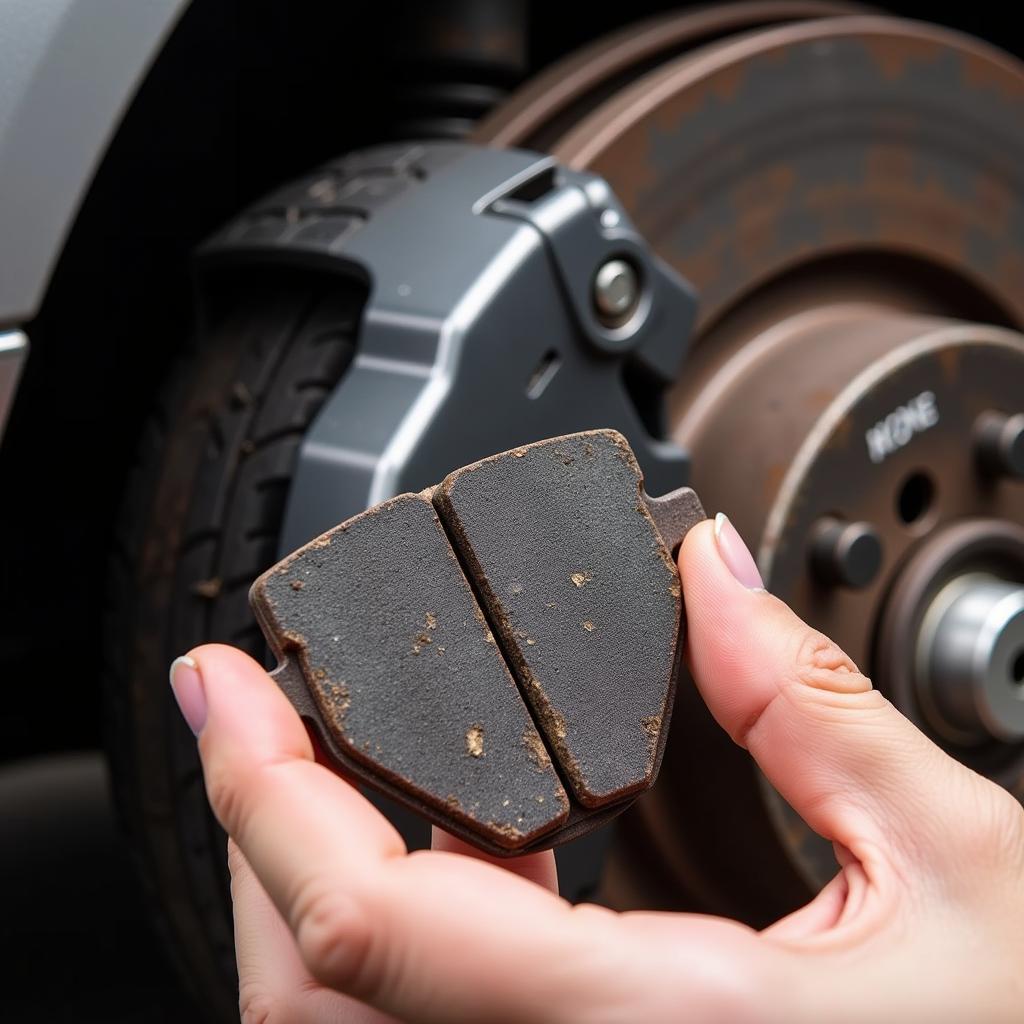The dreaded brake warning light on your Dodge Challenger can be a source of anxiety. This guide delves into the common causes of these warning lights, offering solutions and preventative measures to keep your Challenger’s braking system in top condition. We’ll explore everything from simple fixes to more complex issues, empowering you to diagnose and address the problem effectively.
If you’re experiencing a brake warning light issue on another vehicle, you might find our guide on the GER brake light warning helpful.
Understanding Your Challenger’s Brake Warning System
The brake warning system is a crucial safety feature in your Dodge Challenger. It’s designed to alert you to potential problems within the braking system, ranging from low brake fluid to more serious issues like ABS malfunctions. Ignoring these warnings can lead to dangerous driving conditions and costly repairs.
Common Causes of Brake Warning Lights
There are several reasons why your Challenger’s brake warning light might illuminate. Some of the most common causes include:
- Low Brake Fluid: This is often the simplest explanation. A leak in the brake lines or worn brake pads can cause the fluid level to drop, triggering the warning light.
- Worn Brake Pads: Brake pads have wear indicators that activate the warning light when they reach a certain level of wear. Replacing your brake pads is a routine maintenance task.
- ABS Issues: The Anti-lock Braking System (ABS) light might illuminate if there’s a problem with the system’s sensors, pump, or control module. This requires specialized diagnostic tools to pinpoint the exact issue.
- Parking Brake Engaged: While seemingly obvious, sometimes the parking brake is simply engaged. Double-check this before moving on to more complex diagnoses.
- Faulty Brake Light Switch: This switch activates the brake lights when you press the brake pedal. A malfunctioning switch can sometimes trigger the brake warning light.
Diagnosing the Problem
Diagnosing the cause of the brake warning light often starts with a visual inspection. Check the brake fluid level, examine the brake pads for wear, and ensure the parking brake is disengaged. If the issue persists, you may need more advanced diagnostic equipment.
“A proper diagnosis is crucial,” advises automotive expert John Miller, ASE Certified Master Technician. “Don’t just throw parts at the problem. Use a diagnostic scanner to pinpoint the specific fault code and address the root cause.”
 Dodge Challenger Brake Warning Light – Worn Brake Pads
Dodge Challenger Brake Warning Light – Worn Brake Pads
Remote Diagnostics and Programming
Modern vehicles, including the Dodge Challenger, can benefit from remote diagnostics and programming. This technology allows technicians to access your vehicle’s computer system remotely, identify fault codes, and even reprogram certain modules. This can save time and money, especially for software-related issues.
You might find our resource on what worn brake pads look like on a car useful.
Fixing the Issue
Once you’ve diagnosed the problem, the next step is to fix it. Simple fixes, like topping off brake fluid or replacing brake pads, can often be done at home with basic tools. However, more complex issues, like ABS malfunctions, require the expertise of a qualified technician.
“Never ignore your brake warning lights,” warns Susan Davis, Lead Technician at Challenger Performance. “Addressing the problem promptly can prevent further damage and ensure your safety on the road.”
You can find information related to brake warning lights on other car models, such as the BMW E39 brake light warning or the Dodge Challenger brake warning light itself. Also, if you are experiencing engine warning lights and loss of power, you might find our guide on the Seat Ibiza engine warning light loss power helpful.
Preventing Future Problems
Regular maintenance is key to preventing brake warning lights and keeping your Challenger’s braking system in optimal condition. This includes routine brake inspections, fluid flushes, and timely replacement of worn components.
Conclusion
Addressing Dodge Challenger brake warning lights promptly is paramount for safety and performance. By understanding the common causes, diagnostic methods, and preventative measures, you can keep your Challenger running smoothly and safely. Don’t ignore these warnings – they’re there to protect you.
FAQ
- What should I do if my brake warning light comes on? Pull over safely, check the parking brake, and inspect the brake fluid level. If the problem persists, seek professional help.
- How often should I check my brake fluid? Check your brake fluid level at least once a month.
- Can I drive with the brake warning light on? It’s not recommended. Driving with a brake warning light on can be dangerous.
- How much does it cost to fix a brake warning light issue? The cost varies depending on the cause. It could be as simple as topping off brake fluid or as complex as replacing the entire braking system.
- How can I prevent brake warning lights from coming on? Regular maintenance, including brake inspections and fluid flushes, can help prevent future issues.
- What are the signs of worn brake pads? Squealing or grinding noises when braking, a spongy brake pedal, and reduced braking performance.
- Is it safe to ignore the ABS light? No, the ABS light indicates a potential problem with your anti-lock braking system. While you might still be able to brake, the ABS functionality might be compromised, affecting your vehicle’s stability during emergency braking situations.

